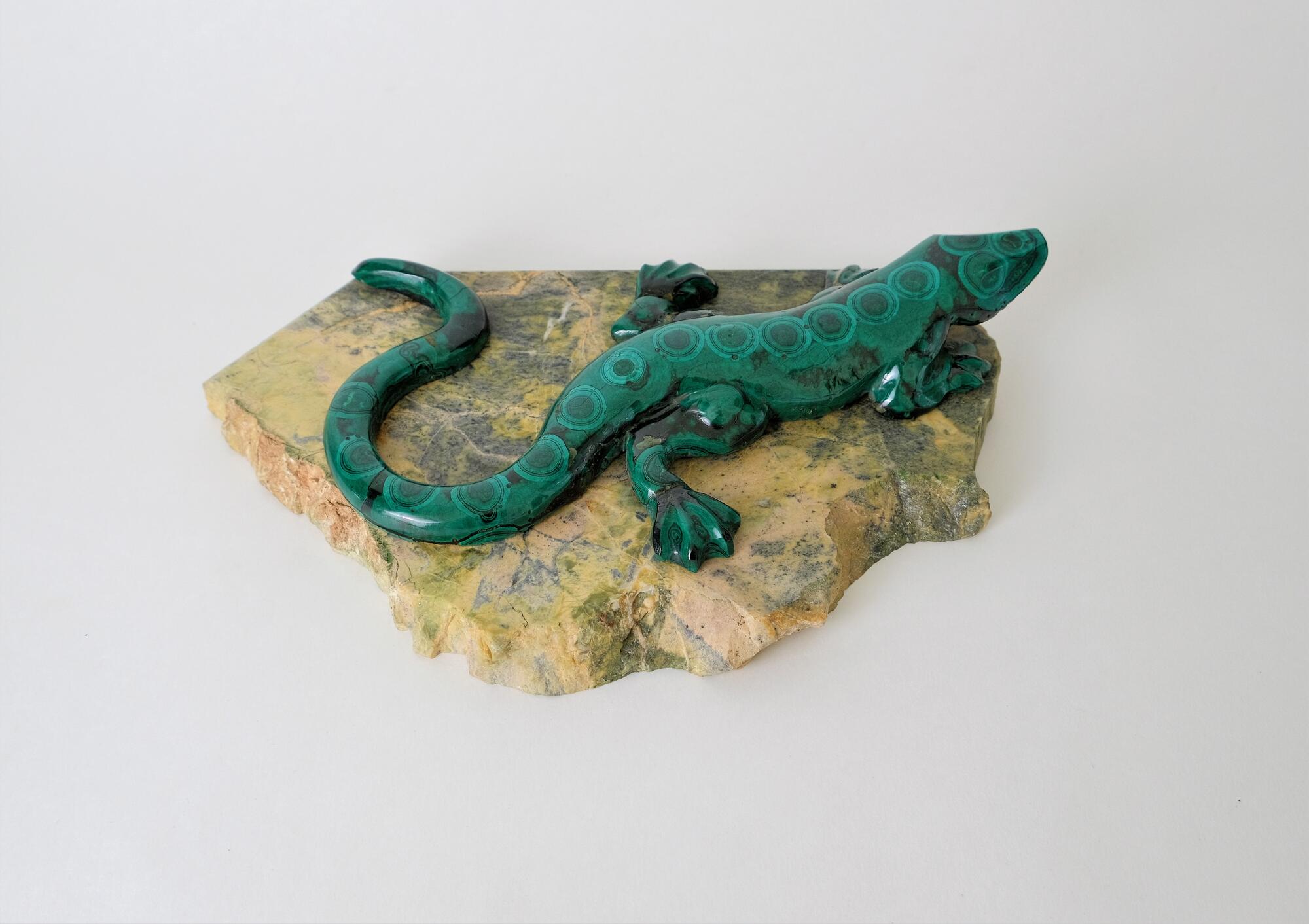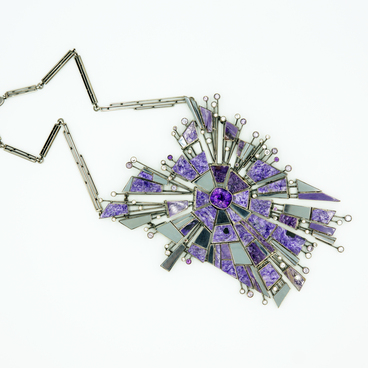Vyacheslav Sitnikov, a designer and stonecutter at the Sverdlovsk factory “Russkiye Samotsvety” (Russian Gemstones), carved the lizard figurine from synthetic malachite. The material was obtained for the first time in Soviet laboratories in the 1970s.
The first attempt to manufacture the artificial stone was made at the end of the 19th century when natural malachite deposits in the Urals were almost exhausted. But all experiments failed: specialists could only synthetize a soft mass unsuitable for stonework.
In Soviet times, scientists worked hard on growing artificial malachite with the same pattern and texture as the natural one. However, it was impossible to set the desired pattern in advance. In the end, three groups of scientists managed to obtain a synthetic stone similar to the natural one, those were: the Institute of Experimental Mineralogy of the Russian Academy of Sciences (the city of Chernogolovka, Moscow Oblast), Research Institute for the Synthesis of Mineral Raw Materials (the city of Alexandrov, Vladimir Oblast), and the Leningrad State University. Three different methods made it possible to obtain any types of stones: kidney-shaped, striped, or with the pattern of circles dispersing from the center or the so-called “plush” — a pattern similar to a crumbled fabric.
In 1975, synthetic malachite was grown at the plant “Russian Gemstones” using the technological processes developed by the Leningrad State University. It was intended for making jewelry and larger items — cigarette cases, candlesticks, boxes, and table clocks. Most of the products were almost identical to those made of natural minerals. However, the production of artificial stone was shut down due to the perestroika (a series of changes in the economy of the Soviet Union which began in 1986 and lead to shortages, political, social, and economic tensions within the country).
Vyacheslav Sitnikov’s malachite lizard sits on a marble base. These animals are often used by Ural stonecutters. Pavel Bazhov also mentioned them in his fairy tales: for example, lizards served the Mistress of the Copper Mountain. They accompanied the masters who were invited by the Mistress to come to her domains. The Mistress herself sometimes appeared to people as a lizard with a tiny crown on its head.
The first attempt to manufacture the artificial stone was made at the end of the 19th century when natural malachite deposits in the Urals were almost exhausted. But all experiments failed: specialists could only synthetize a soft mass unsuitable for stonework.
In Soviet times, scientists worked hard on growing artificial malachite with the same pattern and texture as the natural one. However, it was impossible to set the desired pattern in advance. In the end, three groups of scientists managed to obtain a synthetic stone similar to the natural one, those were: the Institute of Experimental Mineralogy of the Russian Academy of Sciences (the city of Chernogolovka, Moscow Oblast), Research Institute for the Synthesis of Mineral Raw Materials (the city of Alexandrov, Vladimir Oblast), and the Leningrad State University. Three different methods made it possible to obtain any types of stones: kidney-shaped, striped, or with the pattern of circles dispersing from the center or the so-called “plush” — a pattern similar to a crumbled fabric.
In 1975, synthetic malachite was grown at the plant “Russian Gemstones” using the technological processes developed by the Leningrad State University. It was intended for making jewelry and larger items — cigarette cases, candlesticks, boxes, and table clocks. Most of the products were almost identical to those made of natural minerals. However, the production of artificial stone was shut down due to the perestroika (a series of changes in the economy of the Soviet Union which began in 1986 and lead to shortages, political, social, and economic tensions within the country).
Vyacheslav Sitnikov’s malachite lizard sits on a marble base. These animals are often used by Ural stonecutters. Pavel Bazhov also mentioned them in his fairy tales: for example, lizards served the Mistress of the Copper Mountain. They accompanied the masters who were invited by the Mistress to come to her domains. The Mistress herself sometimes appeared to people as a lizard with a tiny crown on its head.


